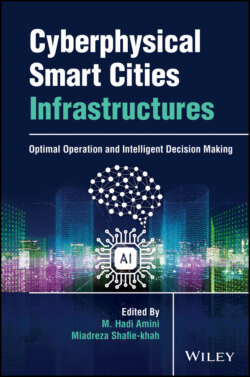Читать книгу Cyberphysical Smart Cities Infrastructures - Группа авторов - Страница 24
2.3.2 Data Analysis
ОглавлениеThe smart cities promises lead us to an ample proliferation and generation in data from all aspects of the domains and branches. Therefore, such huge amounts of data are at the core of the services generated by the IoT technologies [29]. This section of the framework, data analysis, is imperative because its results lead us to make proper decisions. If this process is not accomplished, the decision made will not be efficient. Thus, a large number of research studies have enhanced the process and yielded better results. In the early era of smart cities, there were only limited data generated every day due to the lack of sensors. Therefore, typical machine learning algorithms were sufficient for data analysis to make a model that can handle the situation and provide enough information to make a decision. However, thanks to technologies, the number of sensors and IoT objects have proliferated, and thus we have huge amounts of data that require big data algorithms like and Hadoop to handle the data [30].
Additionally, due to the huge quantity of data, researchers used DL algorithms especially transfer learning and meta‐learning [7] and some other famous machine learning techniques to learn within reinforcement learning like Q‐learning 31–33 for generating smart systems [34, 35].
